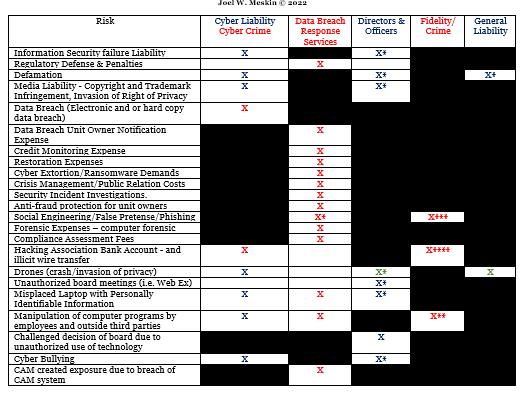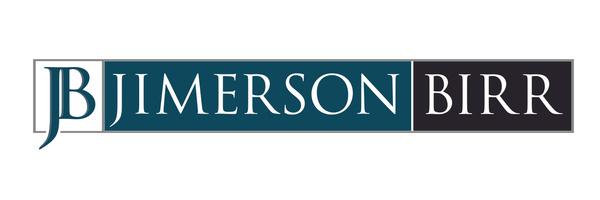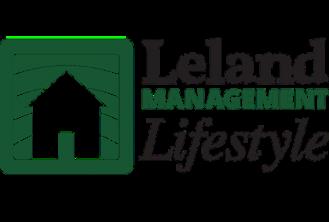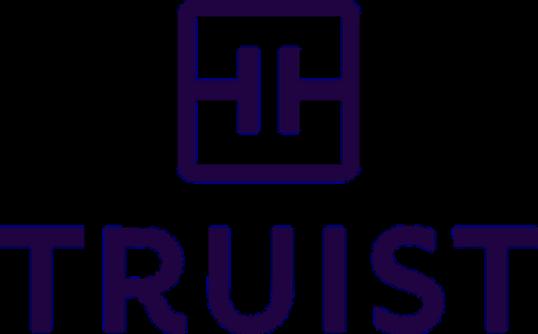
8 minute read
Introduction
A few things that everyone can agree upon is that the Internet of Things (“IoT”), Cyber Liability, Data Breach, Cyber Crime and Technology are touching everyone ' s life, both positively and negatively. Most people agree that all their devices, systems including the required software and hardware are expanding, changing and growing faster than any of us can keep up with or understand. Most everyone communicates using smart phones and/or other smart devices. More and more, new homes are built as smart homes or existing homes are transitioned into smart homes Many of us yearn for times gone by Community Associations are not immune to the intended and unintended consequences of this brave new world that has been changing more and more, and faster and faster. Community Association Boards, Community Association Managers and Business Partners acknowledge the changing world and many know this while many others come from the position that why fix something that they do not perceive as broken. However, at the same time, a vast majority of the community association industry is ready to pursue the necessary elements of the requisite Risk Management of these new technologies (see Wired, 2018 Survey of Cybersecurity in Community associations)
Community Associations, whether condo, coop, Single Family HOA or other common interest development (hereafter referred collectively as “Association(s).”) are managed by boards elected by the unit owners. The key obligation of Board is to Protect, Preserve and Enhance their community association. To comply with their obligation, boards must put the interest of the association ahead of their own and those of the unit owner members Their duty is to the “entity "
The issues addressed here involve risk management, both insurance and non-insurance resources: (1) Proactive Non-Insurance Risk Management tools to eliminate or minimize consequential damage from a cyber event, a data breach event, on-line theft, phishing, social engineering, hacking, ransomware and extortion, amongst others; and, (2) what insurance products are available and what should the policy include to proactively minimize insurance claims and covered losses and perils. The goal of this article is to convince community association Boards, CAMs and Business Partners to put the Risk Management and insurance for these exposures toward the top of the board’s agenda In this
Brave New World, these issues are different from prior board issues. In the past, boards had more breathing room for them to see how claims play out to determine their cost benefit level of risk Boards, CAMs and Business Partners hear about, read about and experience potential cyber, data, technology and the IoT. As most of us know, it is far cheaper to address and fix issues sooner than later. Although the issue is not identical, the timing issue is. The board and unit owners of Champlain Towers South in Surfside Florida received an engineering report in 2018 clearly identifying the significant infra structure issues that were critical and needed to be addressed. The unit owners voted not to pursue any of the necessary work (approximately $9 million) per unit. Many of the board members at the time resigned due to the vote Sometime approximately two years later, unit owners voted to pursue the changes which were now estimated at $16 million.Unfortunately, had they been proactive, and had they chosen not to “defer maintenance” in 2018, there may be 98 individuals still alive and a beautiful building overlooking the ocean standing (I speculate that the fixes and improvements been completed, the unit values would have dwarfed the cost). Admonition:it is imperative that you have your insurance professional meet with your board to evaluate this issue for your association to help identify the issues and to explain the potential insurance solutions In addition, you should have a similar meeting with your CAM(s) to discuss a strategy for non-insurance protected matters.
Associations hear about all the cyber, data, IoT and Technology issues every day but do not see them occurring in community associations. First, earlier this year there was a Ransomware attack in a highrise Boston association. I do not have permission to disclose that insured, but I bet you good money that they were happy to obtain the Cyber Liability/Data Breach coverage Associations are living with a false sense of security. Hackers and cyber criminals no longer only look to large targets. Rather, they are looking at small and soft targets who may not result in a large hit, but are simple and quick hits. At the end of the day, the issue is not “if” a hack or event will occur, but “when” it will occur
When I speak to boards and association professionals on this topic, I am often asked what can we do? Although it is a bit tongue in cheek, I advise them to remove all technology in the management of the association
The first thing you need to do is an audit of your Association’s use of any of the following, including what exposures board members and CAMs may have on their personal or business devices. For example, does your Association Board Members, Employees, CAMs or other business partners use any of the following in the management of the Association? Any positive answers to the following warrant cyber liability/data breach coverage.
FOBs, key cards, remote controls
Building automation system
Computers
Virtual board meetings (Zoom, WebEx, Facebook)
Email, texting, Facebook or other social media
Management Software
Laptops, smart phones, or other smart devices
Website
On line banking
Wire transfer capability
Access to the internet
Maintain applicant or unit owner applications, ESA/ADA request,
Elevators
Security Cameras
On line card payment capability
Any documents/records that are save and stored after the requirement for maintaining them has expired.
Admonition: it is important for board members to understand that there is no board member privilege Therefore, their personal e-mails are not protected from discovery in litigation. Do you want to have your personal devices and/or your business/work data requested in litigation? The only possible protection for this is to either eliminate all email between and amongst board members or to create an intranet type email where the BOD must log into the website BOD section and the email is shared and goes to all BOD members.
IS YOUR ASSOCIATION’S RISK MANAGEMENT PLAN PREPARED TO RESPOND TO THE FOLLOWING CLAIM SCENARIOS?
Unit owner information being stolen by a hacker or disgruntled employee?
An order from a governmental agency to notify current and past unit owners and tenants for whom information has been kept, but is subject to a data breach, and pay any fines or penalties? [see Mass.Gen.aws 93H, Sec. 1]. All 50 states and the DC have Data Breach Laws]
To pay costs for credit monitoring for unit owners, tenants employees and anyone else where the Association still store personally identifiable information?
A laptop or Thumb Drive being lost or misplaced with Unit owner information (personally identifiable information” on it?
Deal with your computer being invaded by a virus and compromising your entry key cards for your building, front gate, clubhouse, elevator and/or pool?
DO YOU KNOW WHO TO CALL IF THE ASSOCIATION INCURS ANY OF THE SCENARIOS ABOVE?
Do you know who to call if any of the scenarios listed above occur? Time is critical!
Do you have someone to call if the computer has been compromised? Time is critical !
Do you have access to education, webinars and proactive risk management services available for the BOD?
Do you have someone to defend the Association against claims by governmental agencies, or civil lawsuits (at someone else’s expense)?
Tip: There is one coverage under the cyber liability/data breach policy that in and of itself is worth its weight in gold and a sufficient reason to purchase the coverage. The data breach response services materials include a number to call if any of the scenarios above occur What is provided is a coach or claim coordinator to assist you with the claim. Most policies provides a booklet outlining the services approved and listing approved Computer Forensic Experts, Forensic Accountants, Attorneys and other principals to assist with various Claim issues within their expertise
THE COST BENEFIT ANALYSIS OF THE STRATEGY TO MANAGE RISK OF CYBER EVENTS, DATA SECURITY AND CYBER CRIME
A hacker encrypting your computer locking it down and demanding a ransom payable in Bitcoin to unlock the computer
Community association insurance professionals (“brokers”) have been proposing cyber liability and data breach coverage for many years Under a Cost Benefit Analysis, this is no longer an optional coverage for the BOD fiduciaries. This should be part of every association’s insurance portfolio.
Board members must understand, their primary obligation is to protect the association’s assets, tangible and intangible, and should heed the professional’s advice regarding the proposed insurance. Failure to obtain this coverage can result in draconian costs. Just Goggle Cyber Liability and Data Breach claim costs
The “cost” to obtain a cyber liability/data breach response policy is relatively inexpensive and provides a great deal of both protection and access to extensive risk management information, data breach coaches, forensic computer experts, and training videos
The first excuse from Boards and CAMs is “cost.” Cost is actually the main concern of the majority of Boards everywhere for all insurance. The typical policy is roughly between $500 and $2,500. The following two policies in Massachusetts are $809 for a $1 MM limit, $902 for a $250K limit, $2,139 for a $500K limit, and $2,669 for a $1MM limit. The key underwriting rating factors are: (a) location, (b) limit of liability requested (c) and the Association’s annual revenue (for the purpose of or underwriting, would be the total of all assessment and special assessments in the upcoming budget year, not capital or improvement or reserve funds). The second excuse is why do we need these coverages in the first place.Boards say: “ we have not seen any claims for cyber liability or data breach in associations.” Boards say “associations are small fish, why would the hacker or cybercriminal spend his or her time on associations”? “Associations are not like Target, hospitals, law firms, insurance agencies, oil companies, large financial institutions.” What is happening is that the large targets are getting smart, significantly upgrading security measures and are doing significant training for all their employees Hackers and cybercriminals are lazy and go for the easy score.
The underwriting of these policies is not very rigorous. Sometimes the key is learning the basic sections of the policy and determine what is covered Most BODs understand that they are insured for any type of risk, injury or damage. However, the question is, are they self-insured or insured by an insurance policy. If it is the former, the insured will have to pay any attorney fees, settlements or judgments out of its own assets. In most states, fines and penalties are not covered.
WHAT INSURANCE AND RESPONSE COVERAGE DOES THE ASSOCIATION NEED?
In the normal course, the insurance coverage purchased by Associations includes two categories of benefits, “defense” of claims, governmental proceedings and civil lawsuits, and “indemnity” for settlements and judgments that the insured becomes liable In addition, there is generally no coverage for fees, penalties ordered by regulatory entities or remedial measures. However, fines, penalties and remedial measures are covered to one degree or another in the cyber liability/Data Breach Response Services policies
Conclusion
The insurers that provide this coverage has videos, articles and trainings, generally at no additionaol cost This does not need to be an “all or nothing” strategy Simple things such as putting limitations on websites, requiring dual authorization to most IoT devices, and be a minimalist with respect to what you maintain.
In addition, insurance should be obtained On the next page is a chart of Insurance Solutions for various risks that Associations may in fact experience and the various insurance policies that may respond. The challenge is that contrary to many other types of policies, the insurers have not developed standard terminology, or standard coverages
In addition, not all policies providing cyber liability/data breach response services are not bundled in the same way with the same coverage.
Insurance Solutions for The Internet of Things - Technology, Cyber Liability, and Data Breach
Joel W. Meskin © 2022
*If the Association D&O or GL policy is silent regarding alleged cyber liability wrongful acts or occurrences, there may be coverage, primarily a defense obligation.
* Some Cyber Liability/Data Breach response are including Cyber Crime
**Some court cases have found coverage available under the computer fraud portion of the Fidelity/Crime Policy.
*** The Fidelity (Employee Theft)/Crime policy must specifically include Social Engineering/False Pretense Coverage
**** The Fidelity/Crime policy must include Wire Transfer Fraud aka Funds Transfer Fraud
NEFLCAI - 2023 Gold Sponsors
Click on their logo to go to their website.
NEFLCAI - 2023 Silver Sponsors
Click on their logo to go to their website.




Let'shavea conversationabout






